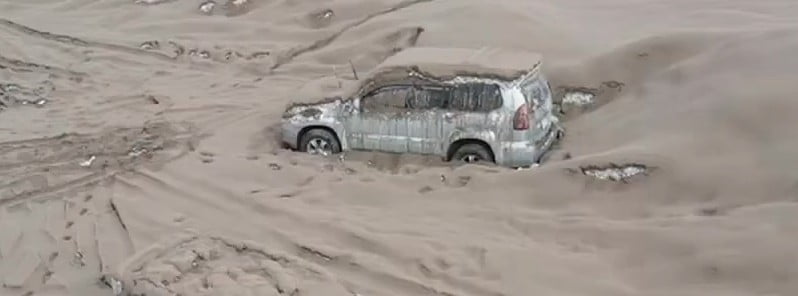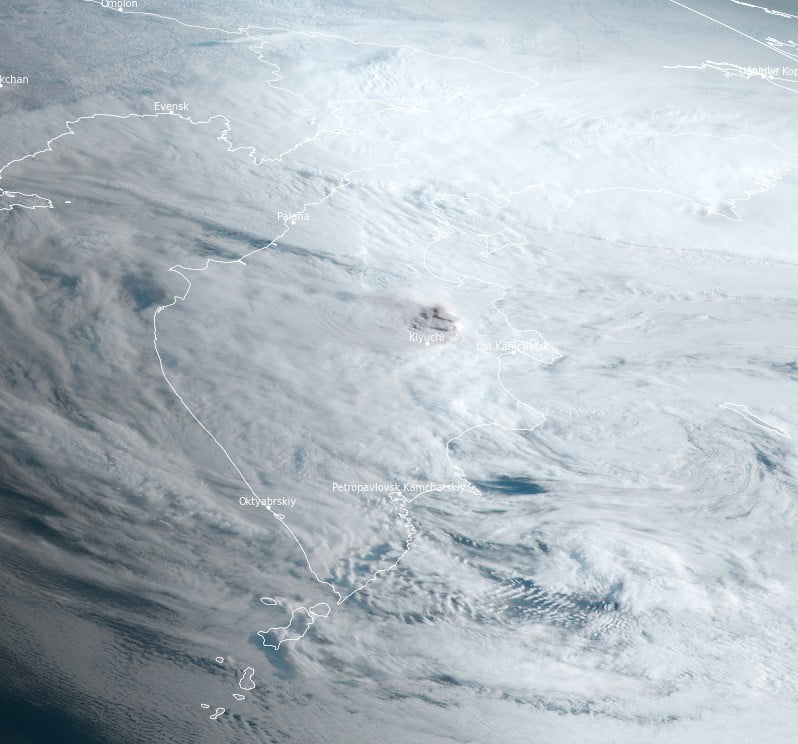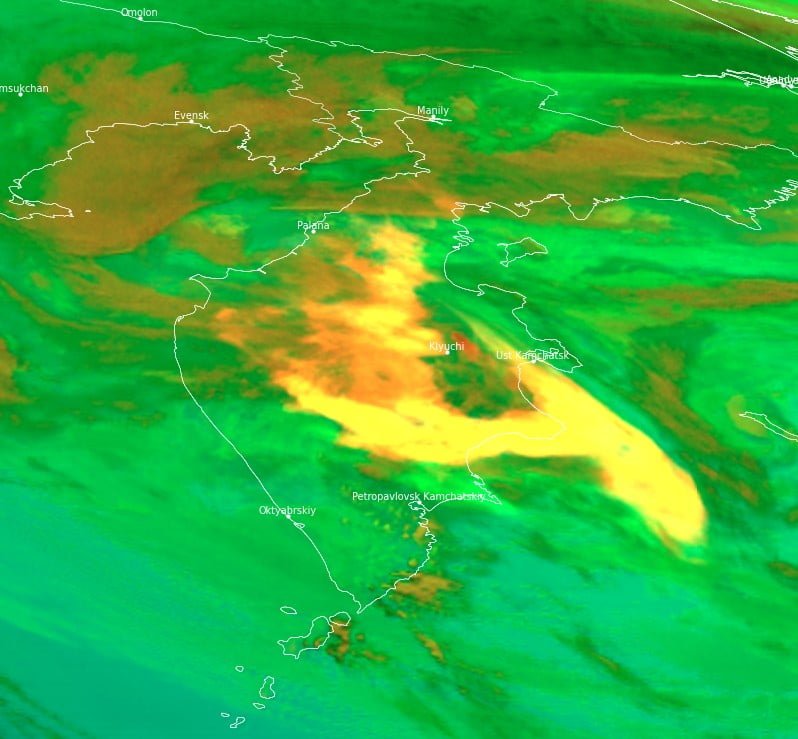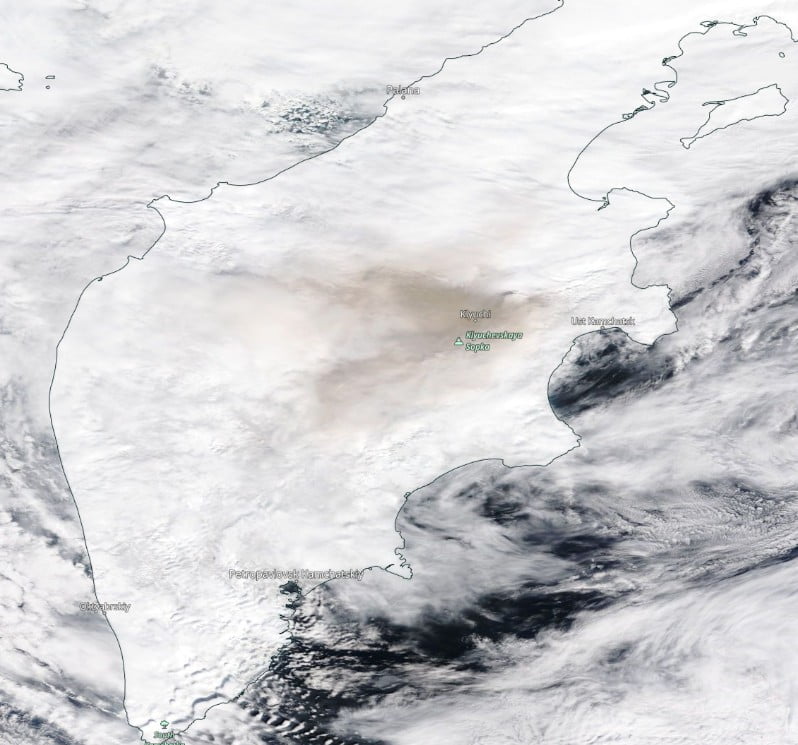Massive eruption at Sheveluch volcano produces strongest ashfall in 60 years, Russia

A powerful explosive eruption took place at Russia’s Sheveluch volcano at 13:10 UTC on April 10, 2023. As a result, KVERT raised the Aviation Color Code from Orange to Red. Very heavy ashfall — the strongest in 60 years — was reported in Klyuchi and other nearby cities and villages.
According to the Tokyo VAAC, volcanic ash reached 15.8 km (52 000 feet) above sea level by 13:40 UTC.
By 19:20 UTC, the distance of the ash plume/cloud was 300 km (186 miles) WNW of the volcano.
At 05:48 UTC on April 11, the Kamchatkan Volcanic Eruption Response Team (KVERT) said strong explosive eruption of the volcano continues. “Explosions sent ash up to 8 km (26 200 feet) a.s.l., ash clouds are drifting about 430 km (270 miles) to the west-south-west and to the south of the volcano.1
Ash explosions up to 15 km (49 200 feet) a.s.l. could occur at any time, KVERT said, adding that ongoing activity could affect international and low-flying aircraft.




Heavy ashfall, up to 8 cm (3.1 inches) was reported in the city of Klyuchi (60 km / 37 miles from the volcano) and the surrounding areas.
According to the Institute of Volcanology and Seismology (IVS) FEB RAS, this is the strongest ashfall in the city of Klyuchi in the past 60 years.
Authorities reported power outages and polluted drinking water in the city. All classes have been temporarily suspended and residents were urged not to leave their homes.
Geological summary
The high, isolated massif of Sheveluch volcano (also spelled Shiveluch) rises above the lowlands NNE of the Kliuchevskaya volcano group.
The 1 300 km3 (311.9 mi3) volcano is one of Kamchatka’s largest and most active volcanic structures.
The summit of roughly 65 000-year-old Stary Shiveluch is truncated by a broad 9-km-wide (5.6 miles) late-Pleistocene caldera breached to the south. Many lava domes dot its outer flanks.
The Molodoy Shiveluch lava-dome complex was constructed during the Holocene within the large horseshoe-shaped caldera; Holocene lava dome extrusion also took place on the flanks of Stary Shiveluch.
At least 60 large eruptions have occurred during the Holocene, making it the most vigorous andesitic volcano of the Kuril-Kamchatka arc.
Widespread tephra layers from these eruptions have provided valuable time markers for dating volcanic events in Kamchatka.
Frequent collapses of dome complexes, most recently in 1964, have produced debris avalanches whose deposits cover much of the floor of the breached caldera.2
References:
1 VONA/KVERT Information Release – KVERT, Institute of Volcanology and Seismology FEB RAS – April 10 and 11, 2023
2 Sheveluch – Geological summary – GVP
Featured image credit: ChP Kamchatka

Commenting rules and guidelines
We value the thoughts and opinions of our readers and welcome healthy discussions on our website. In order to maintain a respectful and positive community, we ask that all commenters follow these rules.